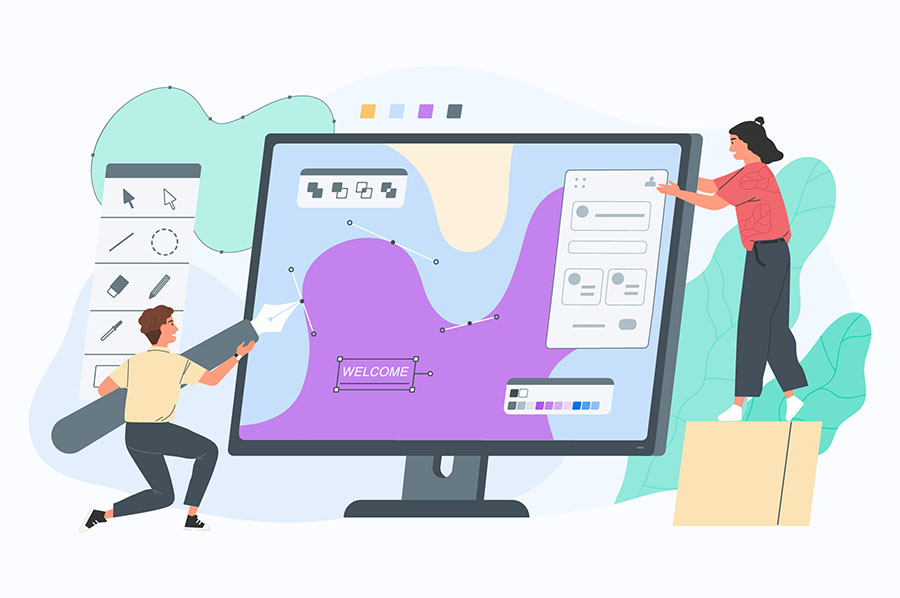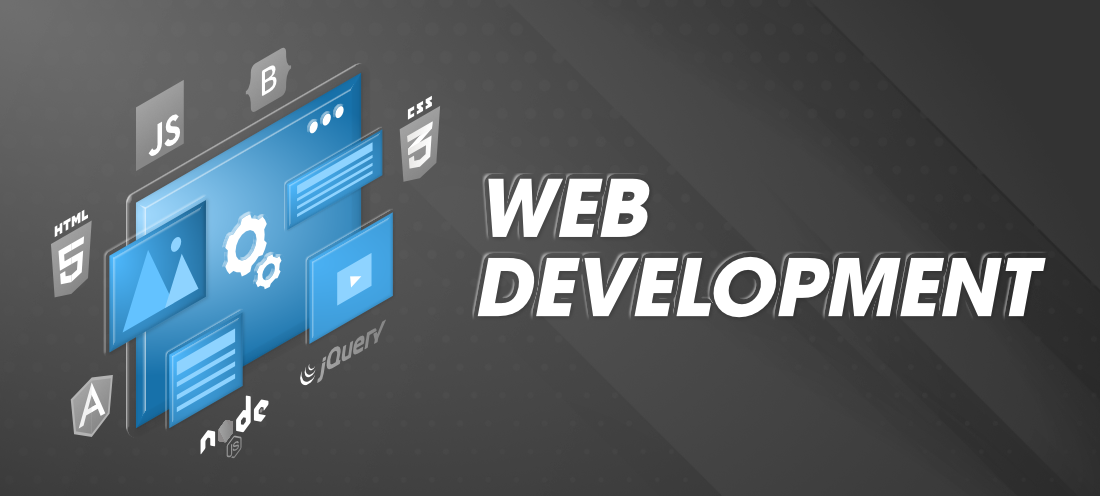All Categories
Featured
Table of Contents
- – Law Firm Website Design, Attorney Web Design, ...
- – Web Developers And Digital Designers - Bureau...
- – Web Design Inspiration : The Best Website Des...
- – Why Good Web Design Is Important, And Why You...
- – Why Web Design Is Dead - - Ux Magazine Tips a...
- – Top Web Design Agencies Ranked - 2022 Reviews...
- – Web Design & Seo By Acs - Syracuse Web Desig...
- – Responsive Web Design - A List Apart Tips an...
- – Webdesign Designs, Themes, Templates And ......
- – Top Web Design Courses Online - Updated [Apr...
- – Arch Web Design: Top-rated Web Design Agency...
Law Firm Website Design, Attorney Web Design, Lawyer ... Tips and Tricks:
Quick summary Usability and the utility, not the visual style, determine the success or failure of a website. Given that the visitor of the page is the only individual who clicks the mouse and therefore chooses everything, user-centric style has established as a basic approach for effective and profit-oriented website design - web design frederick md.
and the energy, not the visual style, determine the success or failure of a site. Given that the visitor of the page is the only person who clicks the mouse and for that reason decides whatever, user-centric design has become a standard technique for successful and profit-oriented website design. If users can't utilize a feature, it might as well not exist.
g. where the search box must be put) as it has actually currently been done in a number of short articles; rather we concentrate on the methods which, used effectively, can cause more sophisticated style decisions and simplify the process of perceiving presented information. Please notice that you might be interested in the usability-related short articles we've published before: Concepts Of Good Website Style And Reliable Website Design Standards, In order to use the concepts appropriately we first need to comprehend how users connect with websites, how they think and what are the basic patterns of users' behavior.
Web Developers And Digital Designers - Bureau Of Labor ... Tips and Tricks:
Visitors look at each brand-new page, scan some of the text, and click the very first link that catches their interest or vaguely resembles the thing they're looking for. In truth, there are large parts of the page they do not even look at. Many users look for something intriguing (or beneficial) and clickable; as quickly as some appealing prospects are discovered, users click.
If a page provides users with premium material, they are ready to compromise the content with advertisements and the design of the website. This is the reason that not-that-well-designed sites with high-quality content gain a great deal of traffic over years. Material is more crucial than the style which supports it.

Users don't read, they scan. Notification how "hot" areas abrupt in the middle of sentences. This is typical for the scanning procedure. Really simple concept: If a site isn't able to fulfill users' expectations, then designer stopped working to get his task done correctly and the company loses money. The higher is the cognitive load and the less instinctive is the navigation, the more prepared are users to leave the site and look for options.
Web Design Inspiration : The Best Website Design Ideas Tips and Tricks:
Neither do they scan webpage in a linear style, going sequentially from one website section to another one. Rather users satisfice; they select the first reasonable alternative. As quickly as they find a link that seems like it may result in the goal, there is a great possibility that it will be instantly clicked.
It does not matter to us if we comprehend how things work, as long as we can use them. If your audience is going to imitate you're creating signboard, then design fantastic billboards." Users wish to have the ability to control their browser and rely on the consistent data discussion throughout the website.
If the navigation and site architecture aren't user-friendly, the variety of question marks grows and makes it harder for users to understand how the system works and how to receive from point A to point B. A clear structure, moderate visual clues and quickly recognizable links can assist users to find their course to their objective.
Why Good Web Design Is Important, And Why You Need It Tips and Tricks:

claims to be "beyond channels, beyond products, beyond distribution". What does it suggest? Given that users tend to explore sites according to the "F"-pattern, these 3 statements would be the first components users will see on the page once it is loaded. The style itself is easy and intuitive, to comprehend what the page is about the user requires to browse for the answer.
When you've achieved this, you can communicate why the system is helpful and how users can benefit from it. Individuals will not use your website if they can't discover their method around it. 2. Don't Waste Users' Patience, In every task when you are going to provide your visitors some service or tool, attempt to keep your user requirements minimal.
Newbie visitors are ready to, not filling long web forms for an account they might never use in the future. Let users check out the site and discover your services without requiring them into sharing private information. It's not reasonable to require users to enter an email address to test the function.
Why Web Design Is Dead - - Ux Magazine Tips and Tricks:
Stikkit is a perfect example for an user-friendly service which needs practically absolutely nothing from the visitor which is unobtrusive and reassuring. Which's what you desire your users to feel on your web site. Apparently, Termite requires more. However the registration can be done in less than 30 seconds as the kind has horizontal orientation, the user doesn't even need to scroll the page.
A user registration alone is enough of an impediment to user navigation to minimize inbound traffic. 3. Manage To Focus Users' Attention, As sites supply both fixed and vibrant content, some aspects of the user interface attract attention more than others do. Clearly, images are more appealing than the text simply as the sentences marked as bold are more appealing than plain text.
Focusing users' attention to particular areas of the website with a moderate use of visual aspects can assist your visitors to obtain from point A to point B without thinking of how it really is expected to be done. The less concern marks visitors have, the they have and the more trust they can develop towards the business the site represents.
Top Web Design Agencies Ranked - 2022 Reviews - Clutch.co Tips and Tricks:
Aim For Function Exposure, Modern web styles are typically criticized due to their method of assisting users with aesthetically appealing 1-2-3-done-steps, big buttons with visual effects and so on. From the style viewpoint these components actually aren't a bad thing.
The website has 9 main navigation options which are visible at the very first glimpse. What matters is that the content is well-understood and visitors feel comfy with the method they communicate with the system.
com gets straight to the point. No adorable words, no overemphasized statements. Instead a rate: simply what visitors are trying to find. An ideal solution for efficient writing is touse short and concise phrases (come to the point as rapidly as possible), usage scannable layout (classify the material, use several heading levels, utilize visual elements and bulleted lists which break the circulation of consistent text blocks), usage plain and objective language (a promo does not require to sound like advertisement; give your users some reasonable and objective reason that they need to utilize your service or stay on your website)6.
Web Design & Seo By Acs - Syracuse Web Design - Google ... Tips and Tricks:
Users are rarely on a site to take pleasure in the style; furthermore, in many cases they are trying to find the information in spite of the style - web design frederick md. Aim for simpleness instead of complexity. From the visitors' perspective, the best site design is a pure text, with no advertisements or more material obstructs matching precisely the query visitors used or the content they have actually been trying to find.
Finch clearly provides the info about the site and gives visitors an option of options without overcrowding them with unneeded material. Not only does it assist to for the visitors, however it makes it possible to view the information provided on the screen.
Complex structures are more difficult to read, scan, analyze and deal with. If you have the option between separating two style segments by a visible line or by some whitespace, it's generally much better to use the whitespace service. (Simon's Law): the better you manage to offer users with a sense of visual hierarchy, the easier your content will be to view.
Responsive Web Design - A List Apart Tips and Tricks:
The very same conventions and rules ought to be used to all elements.: do the most with the least amount of cues and visual aspects. Clarity: all parts ought to be created so their significance is not unclear.
Conventions Are Our Good friends, Conventional design of website components doesn't lead to an uninteresting web site. As they decrease the discovering curve, the need to figure out how things work. It would be a functionality problem if all sites had different visual presentation of RSS-feeds. That's not that various from our regular life where we tend to get utilized to standard concepts of how we organize data (folders) or do shopping (placement of items).
understand what they're getting out of a website navigation, text structure, search placement etc. A typical example from functionality sessions is to equate the page in Japanese (assuming your web users don't understand Japanese, e. g. with Babelfish) and provide your use testers with a job to discover something in the page of different language.
Webdesign Designs, Themes, Templates And ... - Dribbble Tips and Tricks:
Test Early, Test Often, This so-called TETO-principle must be applied to every web style project as functionality tests typically provide into significant problems and concerns related to an offered layout. Test not too late, not too little and not for the incorrect factors.
Some important points to keep in mind: according to Steve Krug, and testing one user early in the task is better than testing 50 near completion. Accoring to Boehm's first law, errors are most frequent throughout requirements and style activities and are the more pricey the later on they are eliminated.
That means that you design something, test it, repair it and then evaluate it again. There might be issues which haven't been discovered during the very first round as users were virtually obstructed by other issues.
Top Web Design Courses Online - Updated [April 2022] - Udemy Tips and Tricks:

This holds for designers. After you have actually worked on a website for couple of weeks, you can't observe it from a fresh perspective anymore. You understand how it is built and for that reason you know precisely how it works you have the wisdom independent testers and visitors of your website would not have.
It can be linked to other locations such as graphic design, user experience, and multimedia arts, but is more aptly seen from a technological viewpoint. It has become a big part of individuals's daily lives. It is hard to think of the Internet without animated graphics, different styles of typography, background, videos and music.

During 1991 to 1993 the Web was born. Text-only pages might be seen utilizing a basic line-mode internet browser. In 1993 Marc Andreessen and Eric Bina, created the Mosaic browser. At the time there were numerous internet browsers, however most of them were Unix-based and naturally text heavy. There had been no integrated method to graphic design components such as images or sounds.
Arch Web Design: Top-rated Web Design Agency For Saas ... Tips and Tricks:
The W3C was created in October 1994 to "lead the World Wide Web to its full potential by developing common protocols that promote its evolution and ensure its interoperability." This discouraged any one company from monopolizing a propriety internet browser and programs language, which might have altered the effect of the Internet as a whole.
As this has actually taken place the innovation of the web has likewise proceeded. There have likewise been substantial changes in the way individuals use and access the web, and this has changed how sites are designed. Because completion of the browsers wars [] brand-new internet browsers have actually been released. Many of these are open source meaning that they tend to have quicker advancement and are more encouraging of brand-new requirements.
Learn more about Lovell Media Group LLC or TrainACETable of Contents
- – Law Firm Website Design, Attorney Web Design, ...
- – Web Developers And Digital Designers - Bureau...
- – Web Design Inspiration : The Best Website Des...
- – Why Good Web Design Is Important, And Why You...
- – Why Web Design Is Dead - - Ux Magazine Tips a...
- – Top Web Design Agencies Ranked - 2022 Reviews...
- – Web Design & Seo By Acs - Syracuse Web Desig...
- – Responsive Web Design - A List Apart Tips an...
- – Webdesign Designs, Themes, Templates And ......
- – Top Web Design Courses Online - Updated [Apr...
- – Arch Web Design: Top-rated Web Design Agency...
Latest Posts
Web Design Museum 1991 – 2006 Tips and Tricks:
Basics Of Web Development & Coding Specialization - Coursera Tips and Tricks:
Web Page Design: A Comprehensive Guide - Adobe Xd Ideas Tips and Tricks:
More
Latest Posts
Web Design Museum 1991 – 2006 Tips and Tricks:
Basics Of Web Development & Coding Specialization - Coursera Tips and Tricks:
Web Page Design: A Comprehensive Guide - Adobe Xd Ideas Tips and Tricks: